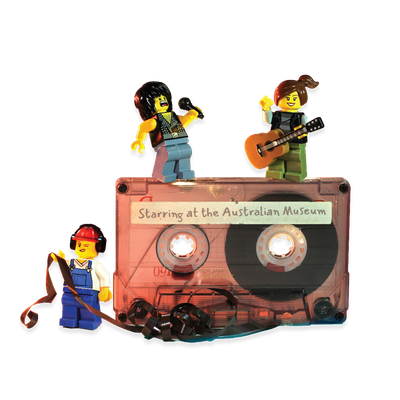Your search returned 4 results
By Page Type
By Tag
- All
- fish (966)
- blog (696)
- fishes of sydney harbour (401)
- First Nations (299)
- Blog (236)
- AMRI (169)
- archives (164)
- Eureka Prizes (146)
- Aboriginal and Torres Strait Islander (135)
- insect (126)
- Ichthyology (124)
- geoscience (109)
- minerals (102)
- climate change (99)
- podcast (94)
- Fish (91)
- Anthropology (89)
- International collections (80)
- Minerals Gallery (78)
- wildlife of sydney (78)
- Labridae (77)
- frog (74)
- gemstone (70)
- photography (66)
- history (64)
- Mollusca (60)
- gem (59)
- staff (59)
- Birds (56)
- Gems (56)
- Indonesia (56)
- education (56)
- shark (55)
- AMplify (54)
- people (53)
- earth sciences (50)
- exhibition (50)
- past exhibitions (50)
- Gobiidae (48)
- sustainability (46)
- Pomacentridae (45)
- Serranidae (44)
- lifelong learning (42)
- science (42)
- Earth and Environmental Science (41)
- Syngnathidae (41)
- Ancient Egypt (40)
- Bali (40)
- bird (40)
- dangerous australians (40)
-
Dinosaur - Tyrannosaurus rex
https://australian.museum/learn/dinosaurs/fact-sheets/tyrannosaurus-rex/Tryannosaurus rex T. rex is one of the most popular and enduring dinosaurs of all, starring in movies and children’s shows as well as featuring in pop culture memorabilia.
-
Dinosaur - Dilong paradoxus
https://australian.museum/learn/dinosaurs/fact-sheets/dilong-paradoxus/This small, earlier relative of Tyrannosaurus rex was the first tyrannosaur found with direct evidence for feathers.
-
Dinosaur - Daspletosaurus torosus
https://australian.museum/learn/dinosaurs/fact-sheets/daspletosaurus-torosus/Stocky and powerful, Daspletosaurus was the king predator of its time, 10 million years older and than T. rex. Up to nine metres long, Daspletosaurus was a formidable beast with heavy bones, a muscular tail and crests above its eyes.
-
Dinosaur - Albertosaurus sarcophagus
https://australian.museum/learn/dinosaurs/fact-sheets/albertosaurus-sarcophagus/Albertosaurus means ‘lizard from Alberta’ in Greek (in honour of Alberta, Canada, where many of the fossils have been discovered) and sarcophagus is Greek for ‘flesh-eating'. It was the top predator of Late Cretaceous Canada, and was the most common of the large carnivores found in Alberta.
-
Discover more
2025 Australian Geographic Nature Photographer of the Year
Special exhibition
Free entry
Now open -
Discover more
Unfinished Business
Special exhibition
Free entry
Now open -
Discover more
Wansolmoana
Permanent exhibition
Free entry
Open daily -
Find out more
Burra
Permanent kids learning space
Free entry
10am - 4.30pm![]()
-
Discover more
Minerals
Permanent exhibition
Free entry
Open daily![]()




